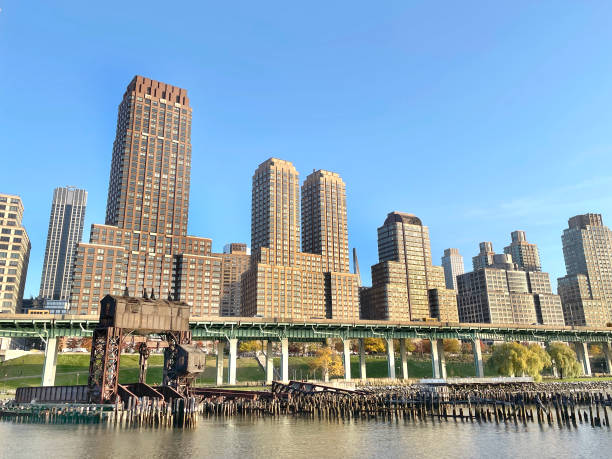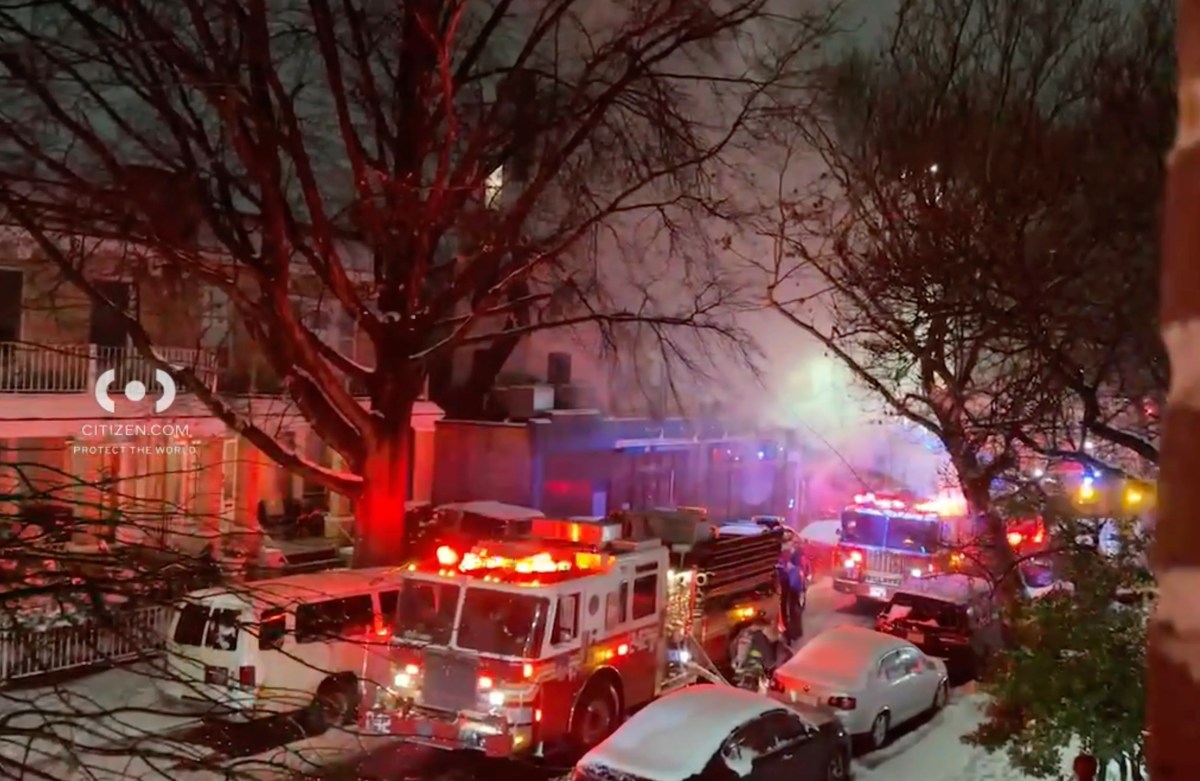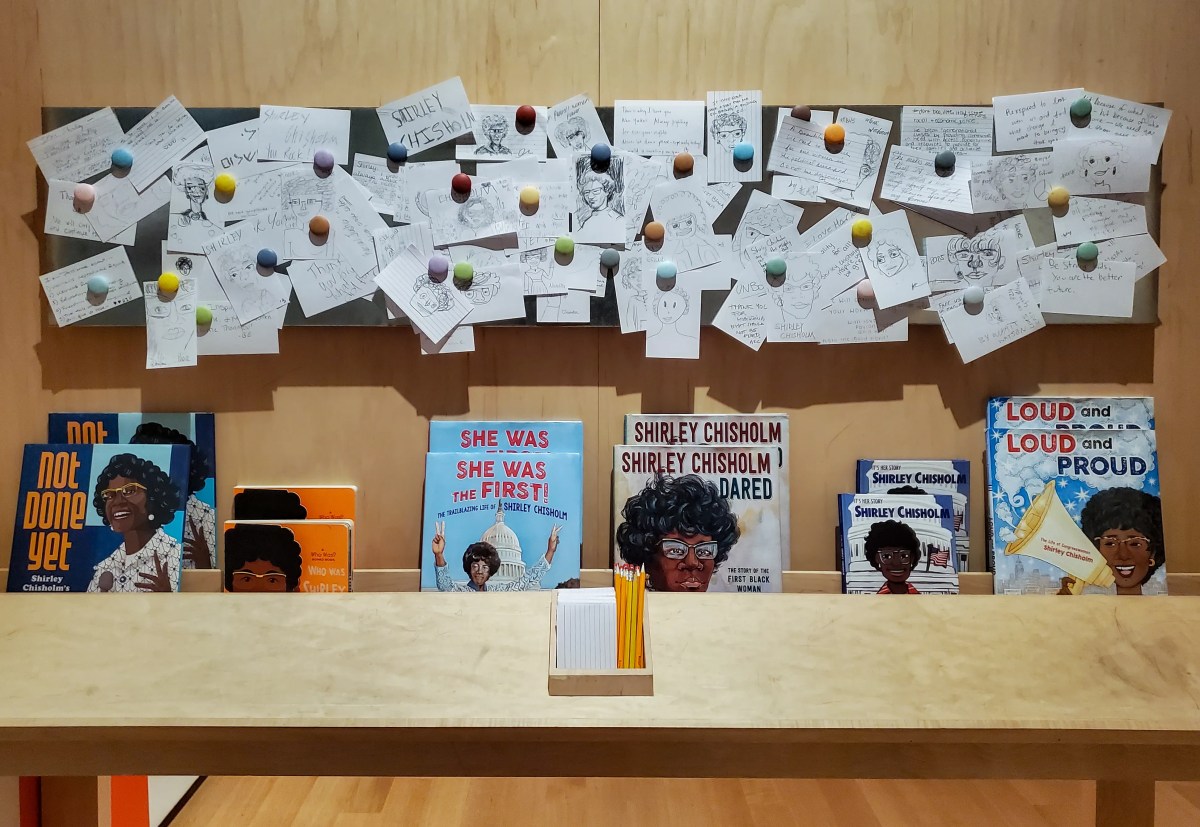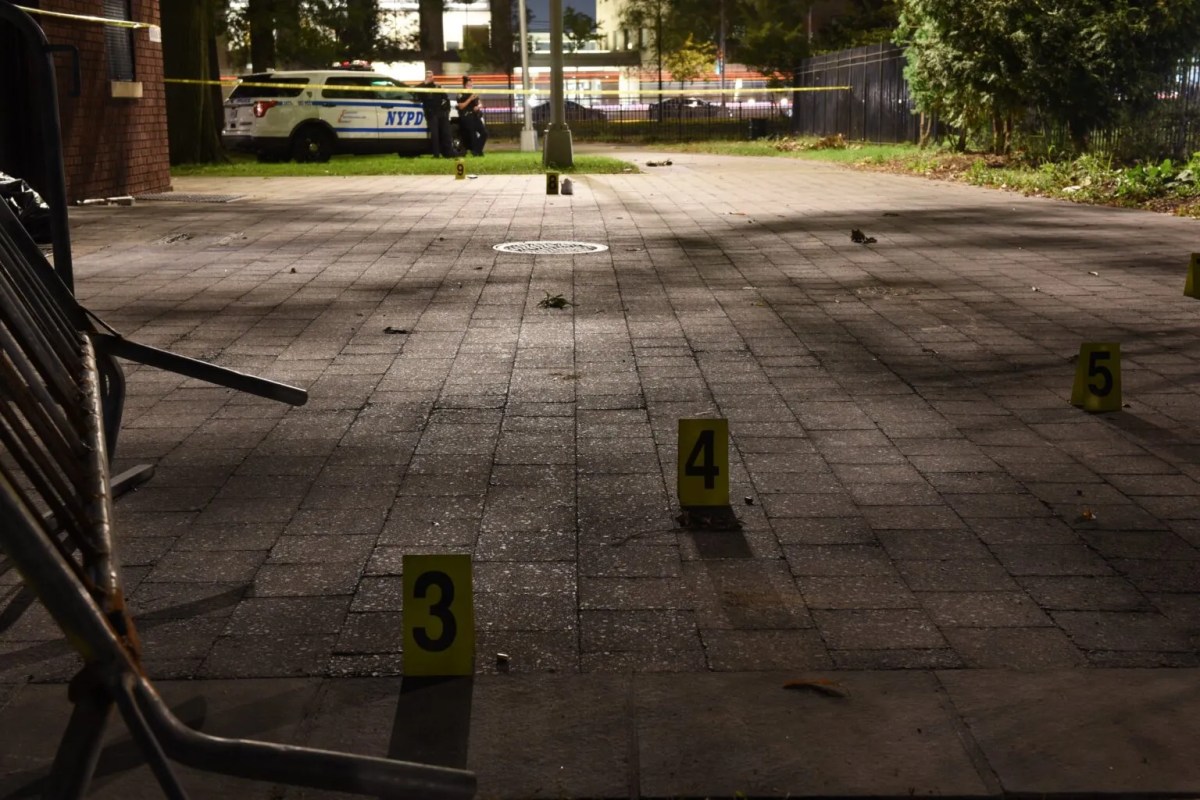BY GABE HERMAN | At a June 11 public hearing about the city’s East Side Coastal Resiliency plan, Lower East Side residents mostly disapproved of the current flood-protection plan and called for more community input into the process.
Held by the Community Board 3 Parks, Recreation, Waterfront & Resiliency Committee, the meeting was part of the Uniform Land Use Review Procedure (ULURP) for the application submitted for the plan. The full board of C.B. 3 will ultimately weigh in with its advisory opinion on the proposed project as part of the public-review process.
The scheme would raise East River Park by about 8 to 9 feet.
Before the evening hearing started at P.S./M.S. 188, The Island School, at 442 E. Houston St., opponents decried the plan at a rally organized by the East River Alliance.
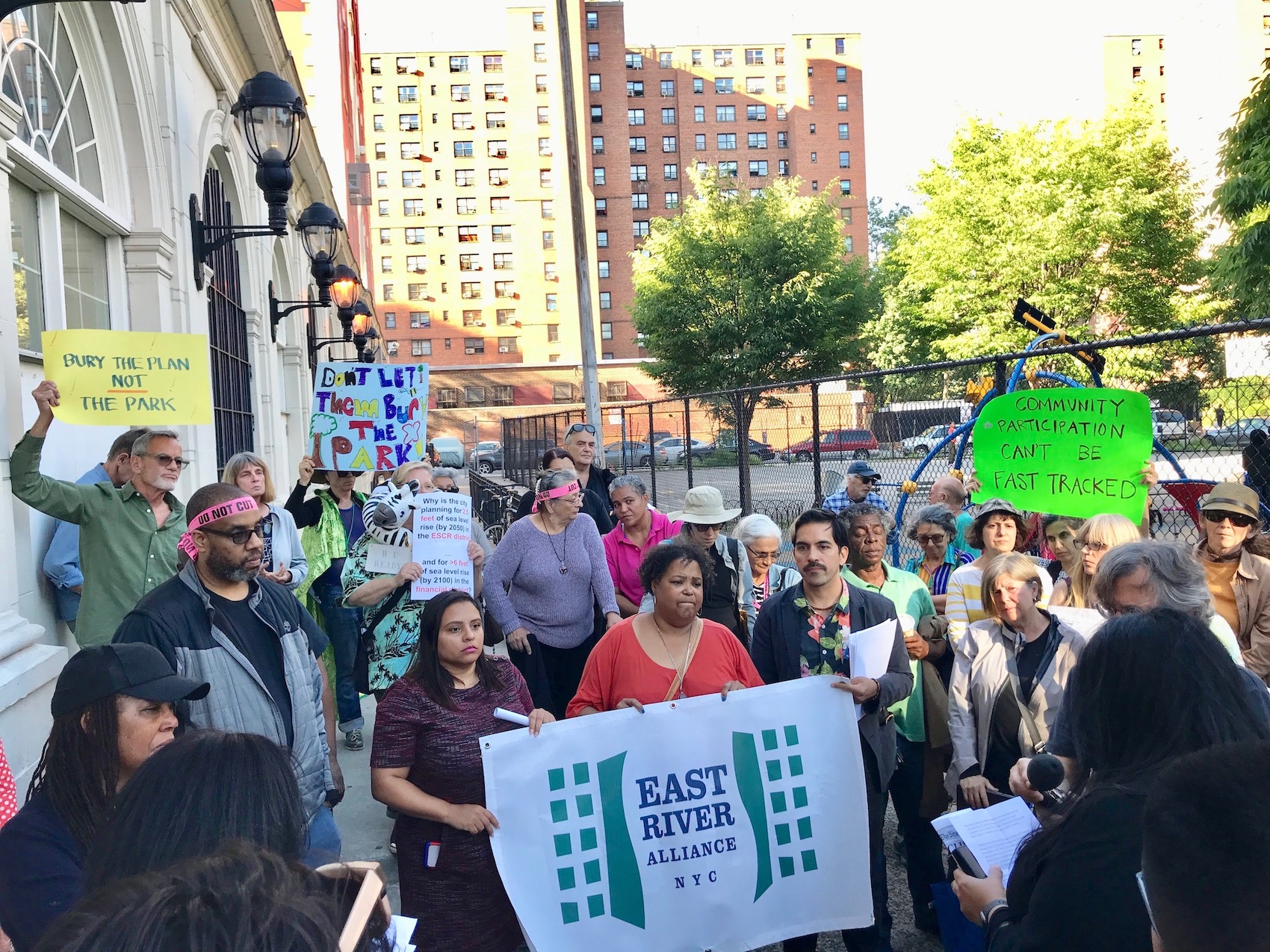
Speakers expressed concerns about the impact on air quality by the project’s construction and also asked for a deck to be built over the F.D.R. Drive to create more park space. There were also calls for a longer-term plan beyond the currently proposed protections, which are geared toward 2050 projected water levels.
Also speaking at the rally was Laura Sewell, executive director of the East Village Community Coalition. She called for an independent, third-party panel of experts to comprehensively evaluate the city’s plan, and to request needed data about it and provide updates to the public.
“Given how critical the project is to our community,” she said, “and how many questions remain unanswered as the plan barrels forward, we deserve nothing less.”
In addition, Sewell said, the community needs temporary flood protection during the construction period, which is currently scheduled to last three-and-a-half years. During that time, the park would be closed to the public, and Sewell said there need to be plans for alternative green spaces.
She added that the city needs to consider the Lower East Side Ecology Center, which has been in a building in East River Park for years and is valuable to the community and the environment, but “has inexcusably gone unrecognized and unaddressed.”
The dozens of protesters then headed inside for the public hearing, which began with a presentation from the city about the current resiliency plan. The full plan and applications can be found on the C.B. 3 Web site.
The plan was presented at the meeting by Jamie Torres-Springer, deputy commissioner of the Department of Design and Construction, and by the Parks Department’s Alyssa Cobb Konon, deputy commissioner for Planning and Development.
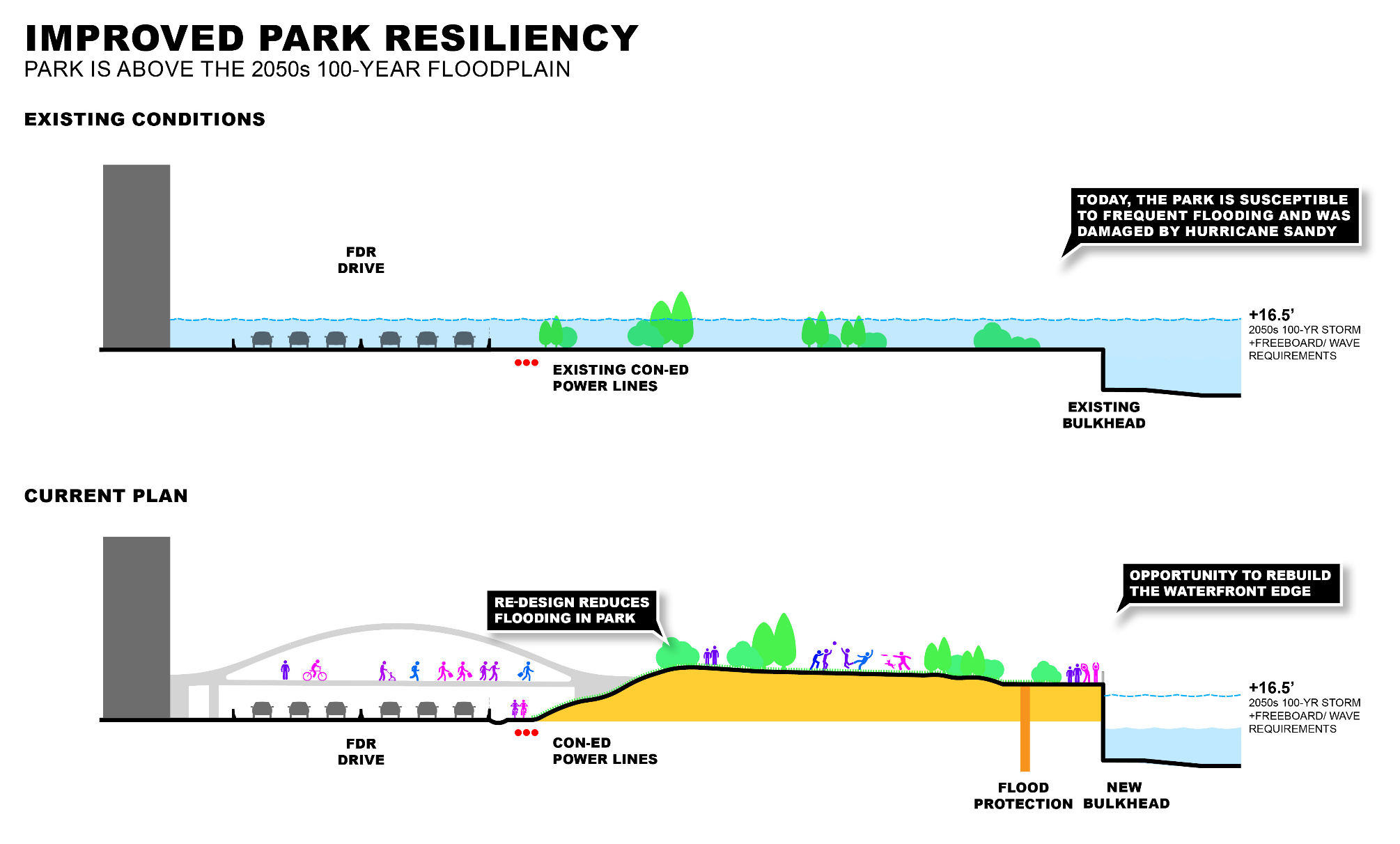
There are 110,000 local residents who would be protected by the resiliency plan, Springer said. He noted that the projected $1.45 billion cost has been fully funded and the project is set to begin next March, after the review and voting processes.
In terms of closing the park during the 3.5 years of construction, Springer said that decision was not made lightly. And keeping parts of the park open during some of the construction is being explored, to see if that is possible without putting park users at risk. He said there will be another public hearing on the ULURP application on July 31.
Springer defended the plan that would protect the East Side up through 2050 projected water levels. He said the project would be adaptable, and that the situation could be reassessed years from now, since conditions could vary from current estimates of sea-level rise and flood threats.
Konon told the crowd there is currently dialogue with the LES Ecology Center about a nature exploration area in the park. There are also plans to add more barbeque grills and solar lights, in response to community requests, she said. In addition, the track-and-field house would be rebuilt with a green roof, and there would be new fitness areas and equipment installed, according to the Parks rep.
Konon stressed other efforts to green the community, including planting 1,000 trees, adding 40 rain gardens, improving the turf at seven fields and adding five new fields by the spring when construction starts, and painting 16 local playgrounds by the spring.
When the microphone was turned over to the public, most were critical of the current plan.
The first man to speak, said, bluntly, “I don’t trust the city to do what they say they’re going to do,” which drew big cheers from the packed auditorium. He said there were many unknowns, including who the experts were that had put this plan together under Mayor de Blasio, and what interests they represent.
Ted Pender, vice president of Friends of Corlears Hook Park, said he was concerned about air quality from all of the soil that would be dumped in the area. He said people would breathe in particles, and that the area already had high asthma rates.
“We deserve a safer plan, and don’t need another World Trade [Center] respiratory event in our city,” he said to more cheers. Pender held up an illustration of his own plan, which included a deck over the F.D.R. Drive to create more green space.
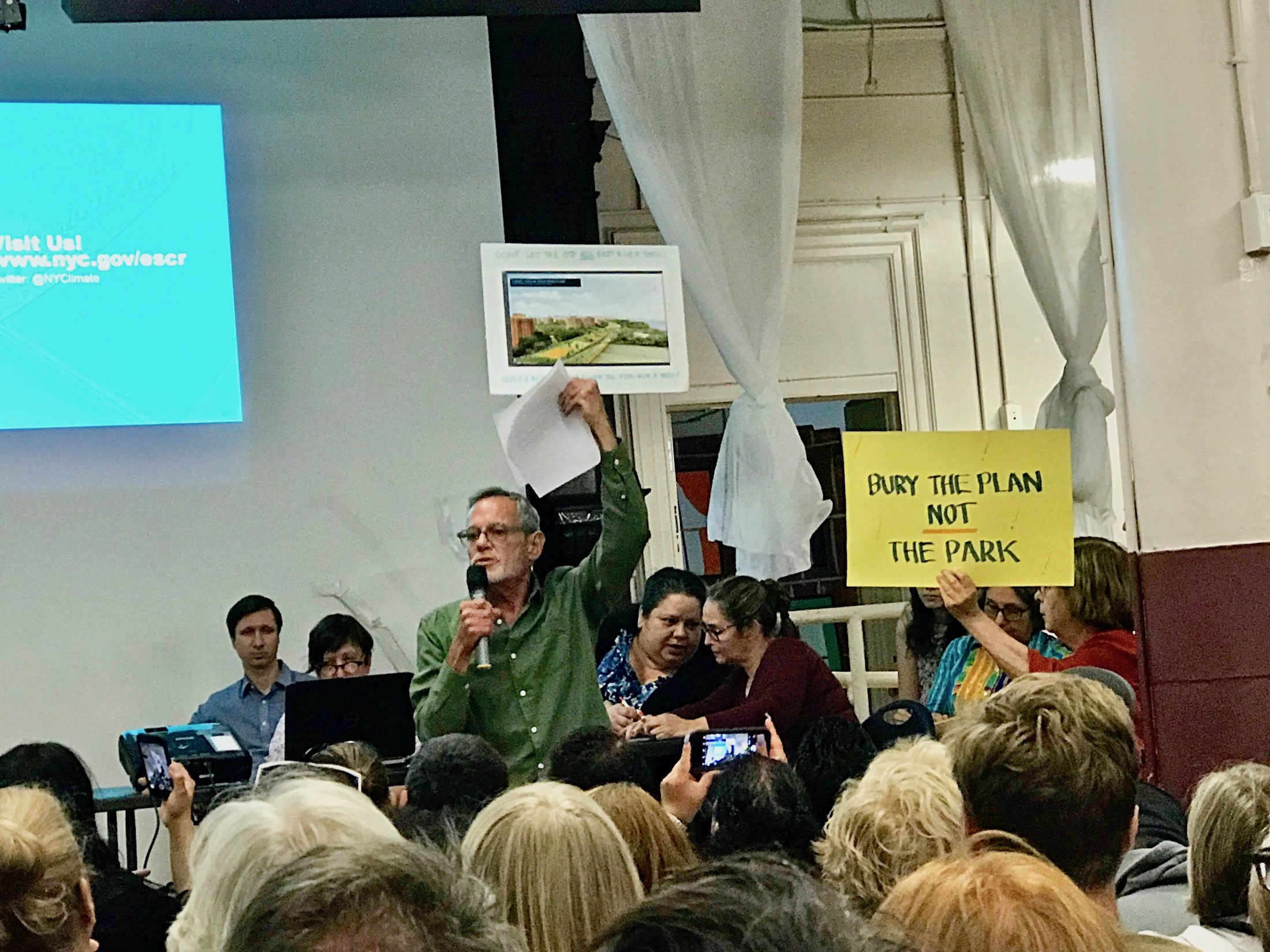
A man who said he has lived in the area for 65 years, said, “Closing up the park is one of the stupidest ideas. Where are we going to go when they close the park?”
He said it was a good idea to fix the park, but that it should be done in phases.
“They’re just thinking of themselves,” he said. “It’s time the people do something because this is our park.”
A local woman echoed concerns about pollution from the project and about the area already having high asthma rates. She said the F.D.R. Drive should be covered with a park.
“Don’t cut the heart out of our neighborhood,” she said, adding, “Let’s see you try this crap in a rich neighborhood.”
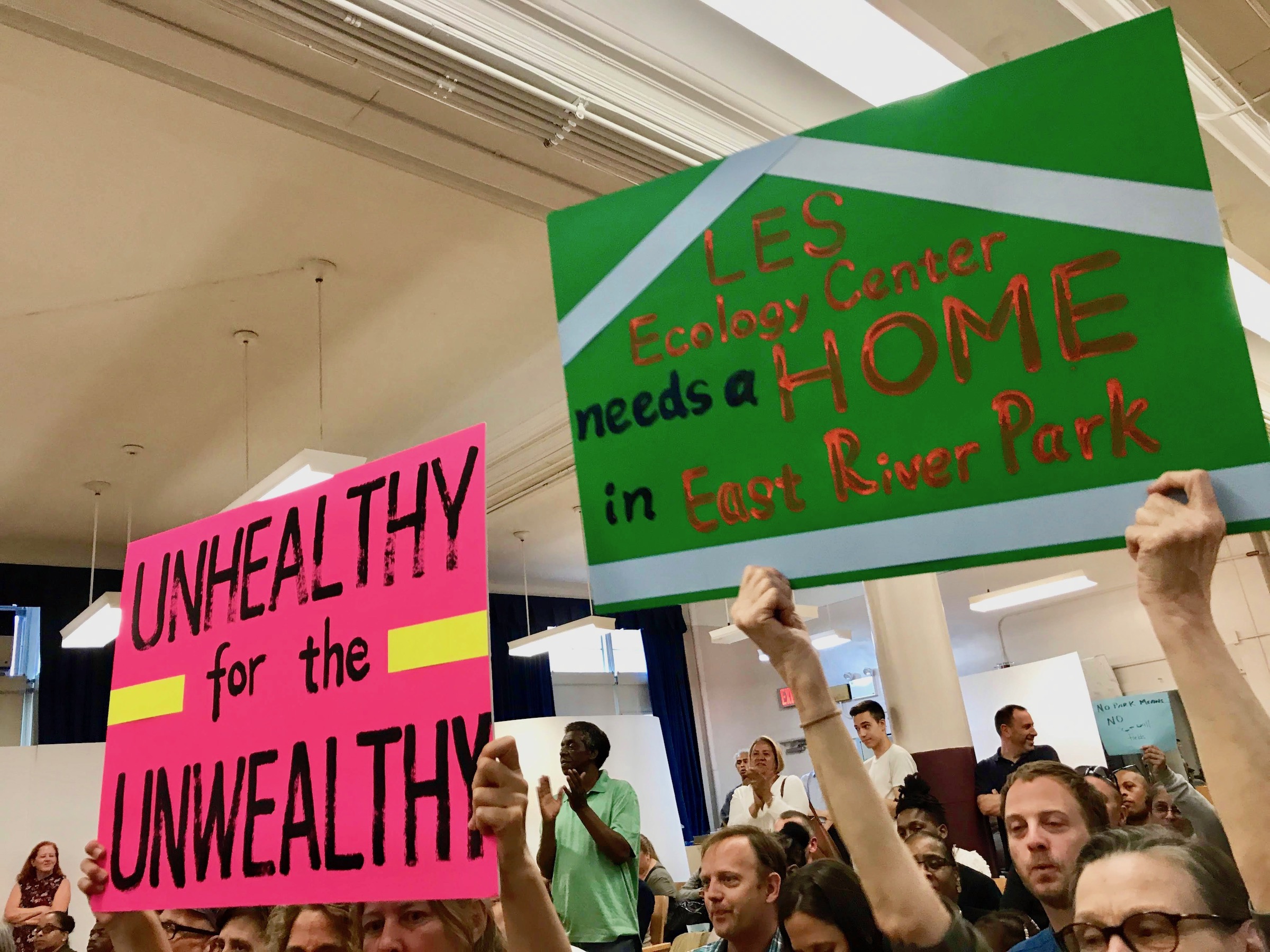
Not everyone was against the plan, though. One woman said she supported the new design and welcomed protection.
And a local man from the Jacob Riis Houses, a New York City Housing Authority development, said he wanted flood protection and didn’t want to suffer the effects of another Hurricane Sandy. He said he wanted the plan to move forward, with quarterly construction mitigation meetings with local leadership, keeping the East River Park Amphitheater the way it looks now, restoring BBQ areas, giving priority to local youth sports leagues, and exploring the possibility of closing the park in phases.
“Everything said, I do support this plan because I want flood protection,” he said, to some boos from the crowd.
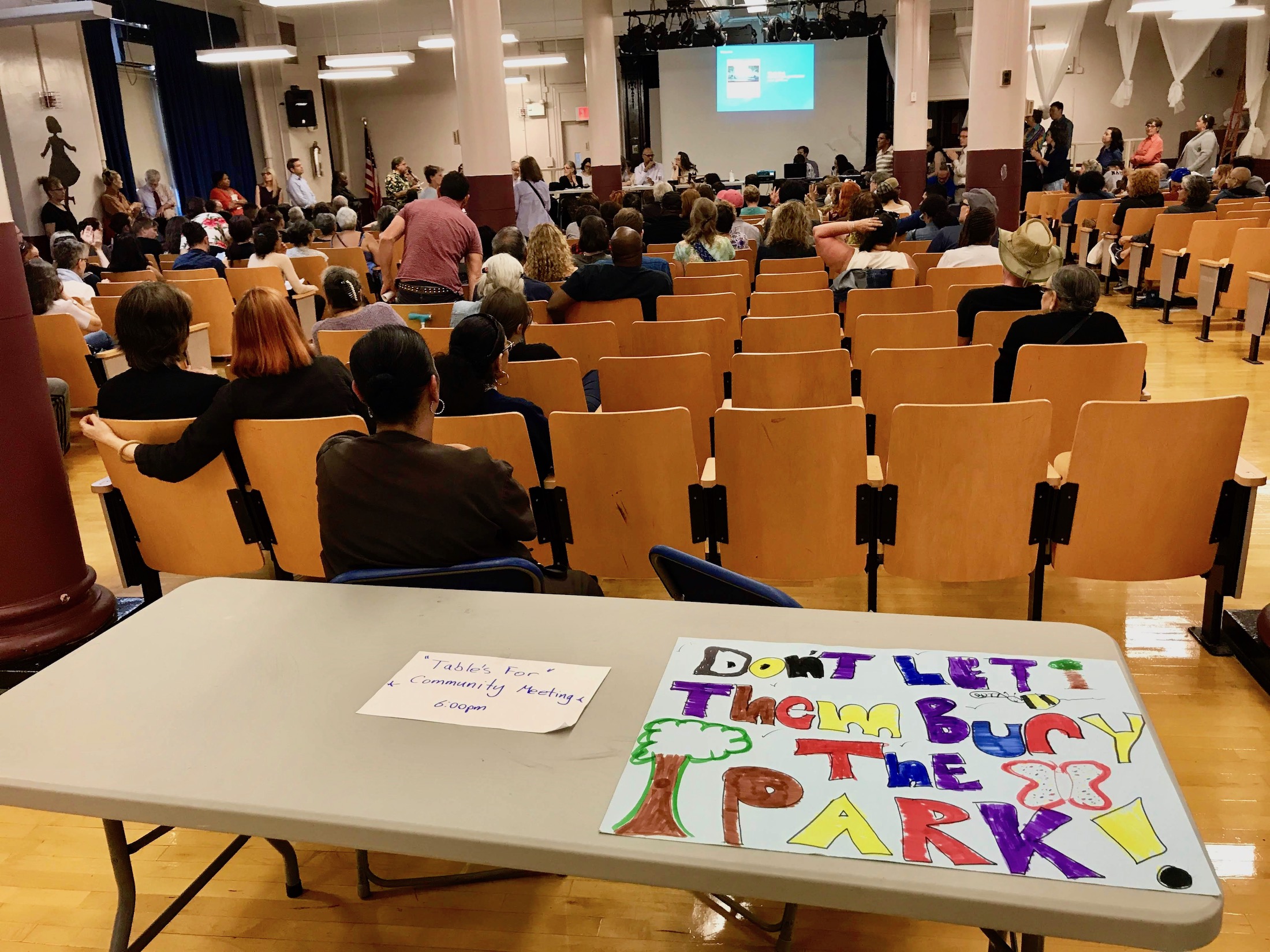
A woman from the East River Alliance said the group had talked to thousands of local residents, and while everyone favors flood protection, many question the current plan. She presented a petition signed by more than 2,500 people, which asked for interim flood protections until the plan is complete, building a park over the F.D.R. Drive, and implementing the project work in stages to let East River Park remain open.
“I call on the board to integrate community input into your recommendations for this plan,” she urged.













